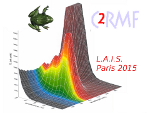Introduction: The lack of natural embayments along the Eastern shores of the Mediterranean made of Tel Akko a major maritime site with a lengthy history of continuous settlement and ancient trade activity spanning 4,000 years. Rich archaeological evidence has unearthed a strong connection with ancient Egypt (from the early part of the 2nd Millennium B.C.E.), Cyprus, Greece and others. In the 2nd and 1st Millennia B.C.E., Tel Akko has been an important anchorage/harbour site due to its strategic geographical location on the northern end of Haifa Bay, in Northern Israel, a focus of terrestrial and maritime routes. Notwithstanding, the exact locations of the ancient vibrant anchorages of Tel Akko, from the Middle Bronze Age to the Persian Period, are still unknown, as well as the precise demarcation of this ancient Mediterranean coastline.
Content: This multi-disciplinary research, framed within the Tel Akko Total Archaeology Project (a holistic innovative field school and research initiative) integrates various methodologies of the Earth Sciences, Archaeology and History to address not only the evolution of the landscape around this ancient site, in space and time, but also its own relationship with the different environments surrounding it, including the Crusader Akko - St. Jean d' Acre, a UNESCO World Heritage Site, the Na'aman River, and the present coastline, now located ca. 1.5 km west of Tel Akko.
Besides incorporating a broad range of surveying techniques to understand the morphology and sub-aerial exposure of the tell, including but not restricted to aerial photography, traditional topography, and detailed historical cartographic analyses, all geospatially constrained, the sub-surface has been mapped with Electrical Resistivity Tomography (ERT) and Ground Penetrating Radar (GPR) in an attempt to locate possible ancient sea gateways, harbour structures, base rock, old marshlands and the ancient 1 Millennium B.C.E. period coastline. An extensive sediment collection campaign is also a major focus of the study in order to understand the palaeo-environmental evolution of the site through space and time. For this, long sediment cores have been collected, analyzed by a combination of Sedimentological, Petrophysical and Biological techniques with key units dated with Optically Stimulated Luminescence (OSL). Shallow test pits have been dug in the south area of the tell, in an attempt to understand its present shape, but also to examine the top-most locii and soil units in relation to other probable ancient paths and entrances to the site vis-à-vis the location of the ancient anchorage or sea gate. OSL ages presented herein are the first of their kind obtained for the study area. Other chronological techniques include identification of ceramics and many radiocarbon ages from one reference sedimentological core (i.e. Kaniewski et al., 2013; 2014).
Results indicate abrupt lithological changes along the western and southern faces of present-day Tel Akko. The presence of a marshy / lagoonal environment on the south vicinity of the tell are indicative of a shallow protected area, proper for an anchorage. The west vicinity of the tell shows a sandy coastline dating back at least to ~3,000 years ago (OSL age, datum 2014), indicative of an active ancient bay shoreline. Over geologic time, the natural environment surrounding Tel Akko has experienced a progressive marine regression, shown in the latero-vertical progradation of its surrounding coastland.
References:
Kaniewski, D., Van Campo, E., Morhange, C., Guiot, J., Zviely, D., Shaked, I., Otto, T., and Artzy, M. (2013) Early urban impact on Mediterranean coastal environments, Scientific Reports 3, 3540.
Kaniewski, D., Van Campo, E., Morhange, C., Guiot, J., Zviely, D., Le Burel, S., Otto, T., and Artzy, M. (2014) Vulnerability of Mediterranean ecosystems to long-term changes along the coast of Israel, PLoS ONE 9, e102090.

 PDF version
PDF version
